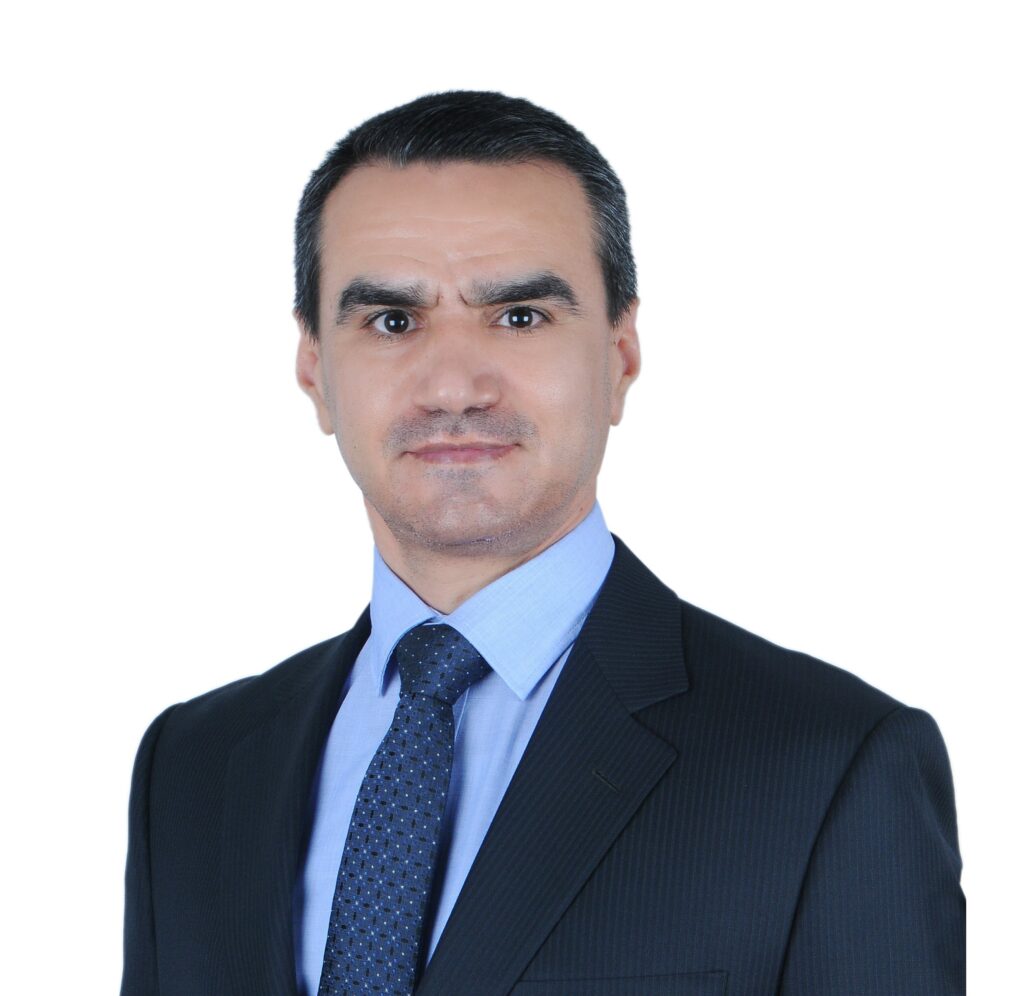Update: Congratulations to Hussein Rida, who won Construction Technology Rising Star yesterday.
Hussein Rida, Manager – Structural Computational Solutions, Khatib & Alami has been shortlisted for Construction Technology Rising Star. Here he talks about his passion for computer science and how he uses this in construction.
[DCH] What got you interested in a career in your area of construction technology?

[HR] By definition, engineers are critical thinkers, problem solvers, creative and innovative by nature. However, over recent decades, most of the engineering effort was consumed in doing hard repetitive work which disrupts the engineer’s passion and makes them lose the momentum of creativity. What’s more, engineers and builders used to produce massive amounts of data during design, tendering, and executing work on site, but none of the historical data could be smartly learnt from. There was no means of using this information to create predictive models that improve future project efficiency or constructability, or to mitigate planning and construction risks and improve safety.
I realised these issues at an early stage of my career, as well as the desirability for businesses to be able to overcome them. In addition, my love to solve problems pushed me to immerse myself in the field of computer science to develop solutions that solve the puzzles and help to improve the AEC industry. Moreover, exploring state-of-the-art technologies that had already reshaped other fields, widened my horizons, and made me explore how I could bring them into the AEC field.
What project has been your favourite or most important to work on so far? Why?
Most of the projects that I work on are challenging, unique, and digitally demanding, and these are factors which are motivating for any technology-orientated engineer.
When Khatib & Alami (K&A) was appointed to deliver the deep pile foundations for a large-scale design-build project in Qatar, construction activities had already started on site. We therefore had to act quickly to meet the client’s requirement for an optimised, cost-effective design. In response to this, I developed a digital solution which synchronises and interchanges the data between soil and structural models, automates the selection of the best piles arrangement underneath the structure, and finally automates the analysis and design of all pile groups. A customised evolutionary genetic algorithm was developed in its entirety during the design process as a primary ingredient for this solution.
Another challenge for this project was to create a software solution that can automate the design of underground generic shell reinforced concrete structures which are subject to combined axial, bidirectional shear, bending, and twisting movements all together.
Another interesting project was the Saudi Telecom Headquarters. The building has an organic, wavy envelope which is very complex, so I used a cloud-based digital wind tunnel solution to compute the façade wind pressure. This enabled the architects to explore organic envelope alternatives to refine the design.
A solution which I really enjoyed developing is “kaConcrete”, which is a sophisticated in-house software that automates and optimises the design of all reinforced concrete elements. “kaConcrete” is being used today by more than 170 structural engineers across K&A design centres, saving an incredible amount of time, reducing manual processes and repetitive work, and eliminating human error.
The final project I will mention is the Revit-Dynamo and Rhino-Grasshopper parametric modelling toolset which I developed to enable our structural engineers to explore multiple design alternatives to find the optimum solution.
How are attitudes towards construction technology changing?
Adoption of transformational digital technologies is revolutionising the construction industry and enabling it to catch up with advanced manufacturing industries like aerospace and automobiles.
The power of cloud computing running on superior parallel cores is a game changer for engineering simulation, especially for the computationally expensive models.
By combining computing power with machine learning, computers will be able to learn from previously produced engineering data without being explicitly programmed, resulting in a plethora of holistic predictive solutions that will allow designers, contractors, and construction managers to make well-informed decisions. Nowadays, machine learning aids in generative design, which converges toward the optimum solution by monitoring, prioritising, and mitigating the risk on the construction site, preventing cost overruns, predicting the best project planning, and improving safety.
Generative design and robotic applications, like 3D printing, are also enabling the use of more advanced and eco-friendly materials, which in turn results in less material wastage and reduced carbon footprints in construction. They are also speeding up construction by producing modular prototypes.
Drones and mobile devices are game changers too, enabling the sequence and quality of construction to be fully monitored, controlled and reported digitally. For instance, site hazards can be rapidly detected and mitigated, while land surveying and mapping are being performed in no time with very minimal cost.
Augmented reality and virtual reality are bringing a new dimension to construction sites by creating an immersive user experience. This is eliminating the need for 2D drawings and 3D models to check the compliance of construction activities with the design documents. It can also automate measurements on site, enabling contractors to work smarter, avoid site hazards and improve safety.
Collaborative cloud-based ecosystems, along with their application programming interfaces, are paving the way for designers and contractors to collaborate, integrate and automate work production under one umbrella that forms a single source of truth.
What skills have allowed you to progress to this point of your career?
There are no magic ingredients. I don’t like to limit myself inside a circle drawn by other digital vendors, as there is a huge difference between being only a technology user and a technology inventor. Therefore, to enable myself to respond to all my employer’s digital demands, I often find it necessary to reinvent the wheel from the ground up as this is the only way to build robust, dynamic, extensible, maintainable and customisable solutions that can respond and solve all engineering problem patterns. To do this, I work constantly to acquire all computer science fundamentals such as design patterns, data structure and algorithms, the art of data science and machine learning, all of which should be built on top of a solid and robust mathematical and physical base.
What advancements (future or underway) in construction tech excite you?
A lot of hot technologies have already started reshaping and revolutionising the construction world. Some of them we can’t even imagine the extent of the contribution they can make, like using blockchain to secure the data of very sensitive projects and make them decentralised and scalable. Exoskeletons are another example of robotic, wearable machines with motorised joints that provide site workers with extra support and power during repetitive movements.
From a personal perspective, as I am more oriented toward the computer science implementations in the AEC industry, I am eager to dive into the field of machine and deep learning by exploring different algorithmic techniques that enable computers to find patterns in large engineering-produced datasets and make predictions without being explicitly programmed. Moreover, engaging both BIM and GIS is something I like to get my hands on to explore the value that I can add.
If you were encouraging others to come into this industry, what would you tell them?
Engineering is all about bringing bright new ideas to shape a better future for our planet, and solving the problems facing humanity. Research, development and investment in technology provides the formula for improving any industry. If you really want to make a difference as an engineer, you need to be a critical thinker, innovative and creative by nature; you should have a great passion and motivation to be engaged; and you should be immersed in state-of-the-art technologies which can help to change the world.
If you have these characteristics, you can create your own “digital fingerprint” in the industry – it’s never too late to do this, which will provide the opportunity to contribute towards transformational solutions such as smart and resilient cities, and sustainable, environmentally-friendly buildings. If you have the determination to change the world around you, then you only need to widen your horizons and be determined to embrace advancing technologies. To motivate you, here’s a simple exponential formula: by only spending 15 minutes per day, which is 1% of your time, after one year you can be 38 times better than you are today [1.01^(365)].
We are now living in the technology era, where everything is boosted exponentially. And I can assure you, if you don’t jump in, you will soon find yourself outdated. Another thought that I have here is that you should try to be a technology innovator, not just a user, as this will drastically differentiate you from others. In plain English, try to be a “subject” and not an “object”. So, if you still have a fresh brain, then start learning coding as this is something essential if you like to create your own unique digital footprint. Even if you are a senior, believe me, as an engineer it should not be that hard to start – you don’t need to know more than 20 words to start talking to the computer and let it perform what you need to achieve, which is much easier than learning a human language.
The Construction Technology Awards 2022 are independently judged by a set of internationally based industry experts. Everyone shortlisted in this category has been approached for an interview. The winner of Woman in ConTech, along with winners in 16 other categories, will be announced on Wednesday 8th June. The Awards are part of our Construction Technology Festival.














